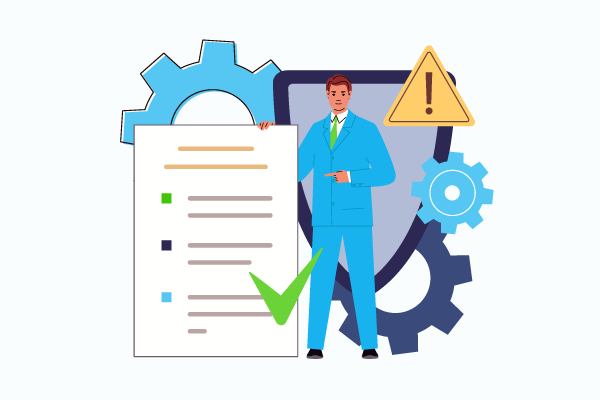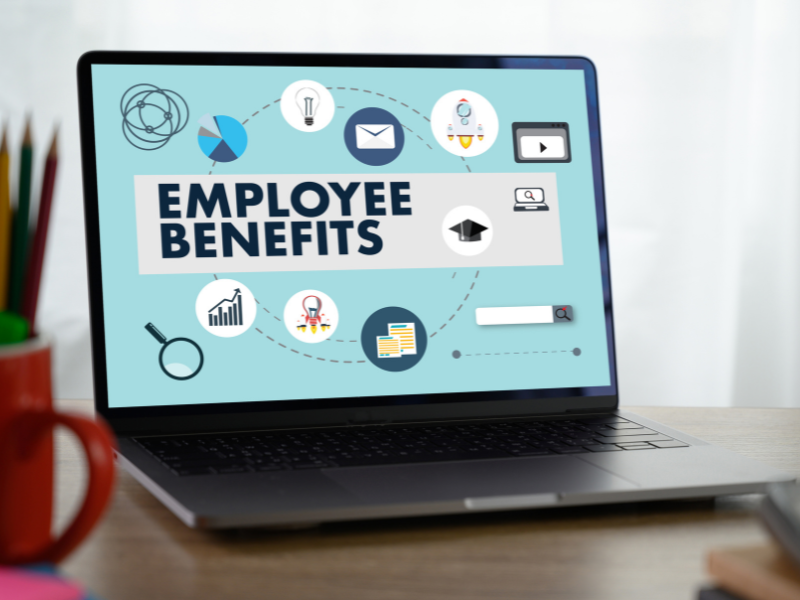How To Ensure Your Employees Are Protected
In today’s fast-paced and competitive business landscape, prioritizing the well-being and safety of your employees is crucial.
As an employer, you have a responsibility to create a work environment that safeguards the physical and mental health of your workforce.
Employee protection goes beyond compliance with legal requirements; it involves fostering a culture of care, trust, and support within your organization.
In this blog, we will explore effective strategies and best practices to ensure that your employees are well-protected.
From physical safety measures to mental health support, we will delve into a range of areas that contribute to creating a secure and nurturing workplace.
Whether you are a small business owner or human resources professional, the insights provided here will help you establish a comprehensive employee protection framework.
How Workplace Safety Impacts Your Employees
We will begin by discussing the importance of workplace safety and how it impacts your employees’ overall well-being.
We’ll explore ways to identify and address potential hazards, implement safety protocols, and promote a safety-conscious culture. Ensuring a safe physical environment is not only a legal requirement but also a fundamental element of building trust and loyalty among your employees.
Next, we will shift our focus to employee health, both physical and mental. We will delve into the significance of comprehensive healthcare benefits, including insurance coverage, preventive care, and access to medical professionals.
Additionally, we will explore strategies to promote mental well-being, such as providing employee assistance programs, promoting work-life balance, and fostering open communication channels.
Employee education and training will also be a key aspect of our discussion. Empowering your employees with the knowledge and skills to navigate potential risks and hazards is essential.
We will explore the importance of training programs, workshops, and ongoing educational initiatives that enhance safety awareness and equip employees with the tools to protect themselves and their colleagues.
Furthermore, we will address the significance of fair compensation and benefits. Ensuring that your employees are fairly rewarded for their contributions not only motivates them but also serves as a form of protection.
We will explore strategies for implementing equitable compensation structures, offering competitive benefits packages, and fostering a transparent and inclusive work culture.
Lastly, we will discuss the role of leadership in employee protection. As a leader or manager, you play a pivotal role in creating a supportive and protective work environment. We will explore effective leadership practices that prioritize employee well-being, including open communication, active listening, and promoting a sense of belonging and psychological safety.
By the end of this blog, you will have a comprehensive understanding of how to ensure your employees are protected. Whether you are looking to improve existing practices or establish new ones, the insights shared here will serve as a valuable guide.
Remember, employee protection is not just a legal obligation; it is an investment in the success and longevity of your organization.
So, let’s dive into the world of employee protection and discover the transformative impact it can have on your workforce and your business as a whole.
Importance Of Workplace Safety
Workplace safety is of paramount importance as it directly impacts the well-being and productivity of employees.
By prioritizing safety measures, employers create an environment where employees feel protected, valued, and motivated to perform at their best.
A safe workplace reduces the risk of accidents, injuries, and illnesses, resulting in fewer absences, lower turnover rates, and increased employee satisfaction.
Moreover, it demonstrates an organization’s commitment to its workforce, fostering trust, loyalty, and a positive company culture.
Workplace safety is not just a legal obligation; it is an investment in the overall success and sustainability of the business, creating a foundation for long-term growth and prosperity.
Five Ways To Identify And Address Potential Hazards
Regular Risk Assessments: Conduct routine evaluations of your workplace to identify potential hazards. Engage employees in the process, as their insights are invaluable. Document and prioritize identified hazards based on severity and likelihood.
Encourage Employee Reporting: Foster open communication and create a safe space for employees to report hazards and concerns. Establish a clear reporting mechanism and address reports promptly and transparently.
Comprehensive Training: Provide thorough safety training that covers equipment usage, emergency procedures, and hazard recognition. Conduct periodic refresher sessions to reinforce safe practices and empower employees.
Safety Protocols and Policies: Develop and implement clear protocols and policies addressing specific workplace hazards. Regularly review and update them to align with industry standards and regulations. Ensure employee awareness and adherence.
Regular Inspections and Maintenance: Conduct frequent inspections to identify potential hazards and signs of equipment wear and tear. Implement a preventive maintenance program and promptly address any issues discovered.
By consistently applying these strategies, you demonstrate a commitment to employee safety, minimize risks, and foster a proactive culture of maintaining a safe work environment.
Significance Of Comprehensive Healthcare Benefits:
– Comprehensive healthcare benefits are vital for employee well-being.
– Insurance coverage provides financial protection against medical expenses.
– Preventive care promotes early detection and treatment of health issues.
– Access to medical professionals ensures timely and quality healthcare services.
– Comprehensive healthcare benefits foster a healthier workforce and reduce absenteeism.
– Employees feel valued and supported when their healthcare needs are met.
– It enhances employee satisfaction, loyalty, and productivity.
– Promoting a culture of wellness improves overall organizational performance.
– Investing in healthcare benefits is an investment in employee retention and recruitment.
– It demonstrates an employer’s commitment to the health and welfare of their workforce.
A. Implement Employee Assistance Programs (EAP) to provide confidential counseling and support services for employees facing mental health challenges.
B. Encourage work-life balance by promoting flexible work arrangements, setting realistic workload expectations, and encouraging employees to take breaks and time off when needed.
C. Foster open communication channels where employees feel comfortable discussing mental health concerns without fear of judgment or stigma.
D. Offer mindfulness and stress reduction programs or resources to help employees manage stress and improve their mental well-being.
E. Provide training and education to raise awareness about mental health, reduce stigma, and equip employees with coping strategies to maintain good mental health.
Employee Safety Education:
In our discussion, we cannot overlook the crucial role of employee education and training.
Empowering your workforce with the necessary knowledge and skills to navigate potential risks and hazards is paramount.
By equipping employees with the tools to identify and address potential dangers, you create a proactive and safety-conscious environment where everyone plays an active role in maintaining a secure workplace.
With proper education and training, your employees become confident and capable guardians of their own well-being and the well-being of their colleagues, fostering a culture of safety and preparedness.
Importance Of Employee Training Programs
Training programs, workshops, and ongoing educational initiatives play a pivotal role in enhancing safety awareness and equipping employees with the necessary tools to protect themselves and their colleagues.
By investing in these initiatives, organizations demonstrate a commitment to employee well-being and create a culture of safety.
Through interactive and practical training, employees gain knowledge about potential hazards, learn proper safety protocols, and develop critical skills to prevent accidents and injuries.
These initiatives empower individuals to become proactive safety advocates, fostering a collaborative and vigilant environment where everyone actively contributes to maintaining a secure workplace.
Continuous learning ensures that employees stay updated with evolving safety standards, making them better prepared to mitigate risks and respond effectively to emergencies.
Ultimately, robust training programs and educational initiatives not only safeguard employees but also contribute to increased productivity, reduced downtime, and the overall success of the organization.
Significance Of Fair Compensation And Benefits
Fair compensation and benefits demonstrate an organization’s commitment to valuing and appreciating its employees, fostering motivation, satisfaction, and overall well-being.
Providing competitive compensation and benefits packages, in line with the industry standards is essential to recruit and retain qualified talent. It also creates a positive impression on potential candidates who may be considering joining the organization.
In addition, providing medical coverage helps employees maintain their physical and mental health, resulting in better productivity and reduced absenteeism.
Importance Of Employee Training Programs
Training programs, workshops, and ongoing educational initiatives play a pivotal role in enhancing safety awareness and equipping employees with the necessary tools to protect themselves and their colleagues.
By investing in these initiatives, organizations demonstrate a commitment to employee well-being and create a culture of safety.
Through interactive and practical training, employees gain knowledge about potential hazards, learn proper safety protocols, and develop critical skills to prevent accidents and injuries.
These initiatives empower individuals to become proactive safety advocates, fostering a collaborative and vigilant environment where everyone actively contributes to maintaining a secure workplace.
Continuous learning ensures that employees stay updated with evolving safety standards, making them better prepared to mitigate risks and respond effectively to emergencies.
Ultimately, robust training programs and educational initiatives not only safeguard employees but also contribute to increased productivity, reduced downtime, and the overall success of the organization.
Significance Of Fair Compensation And Benefits
Fair compensation and benefits demonstrate an organization’s commitment to valuing and appreciating its employees, fostering motivation, satisfaction, and overall well-being.
Providing competitive compensation and benefits packages, in line with the industry standards is essential to recruit and retain qualified talent. It also creates a positive impression on potential candidates who may be considering joining the organization.
In addition, providing medical coverage helps employees maintain their physical and mental health, resulting in better productivity and reduced absenteeism.
Strategies For Implementing Equitable Compensation Structures
A. Implementing equitable compensation structures ensures that employees are fairly rewarded based on their skills, experience, and contributions, promoting a sense of fairness and reducing disparities.
B. Offering competitive benefits packages goes beyond salary, providing additional perks such as healthcare, retirement plans, and work-life balance initiatives, attracting and retaining top talent in a competitive job market.
C. Fostering a transparent work culture involves openly communicating about compensation and benefits, ensuring employees understand the rationale behind the decisions, building trust, and reducing potential conflicts or perceptions of unfairness.
D. Embracing inclusivity in compensation and benefits practices acknowledges and values the diverse needs and contributions of employees, ensuring that everyone has access to equal opportunities and resources.
E. Regularly reviewing and benchmarking compensation and benefits against industry standards and market trends allows organizations to stay competitive, attract high-caliber talent, and create a positive perception of their commitment to employee well-being.
Role Of Leadership In Employee Protection
The role of leadership in employee protection cannot be overstated. Effective leaders prioritize employee well-being, creating a supportive and safe work environment.
They lead by example, adhering to safety protocols and demonstrating a commitment to following best practices.
By promoting open communication channels, they encourage employees to voice safety concerns and provide valuable input.
Furthermore, leaders invest in ongoing training and development to ensure employees are equipped with the necessary knowledge and skills to navigate potential hazards.
Through their actions, leaders foster a culture of safety, trust, and accountability, where employee protection becomes an integral part of the organizational DNA.
The importance of leadership in workplace safety cannot be overstated. Leaders have a responsibility to create an environment that is safe and conducive to productivity, while also providing the necessary resources and support for employees.
By setting a positive example and engaging in open communication, leaders can ensure that safety becomes a priority throughout the organization. Ultimately, this kind of proactive approach to safety will result in a more productive, engaged, and healthy workforce.
By speaking with a representative from our organization, business owners can learn about the best methods for safeguarding their employees.
Our experienced team can provide personalized advice that takes into account the unique needs of each business, and propose a tailored solution that fits within their budget.




